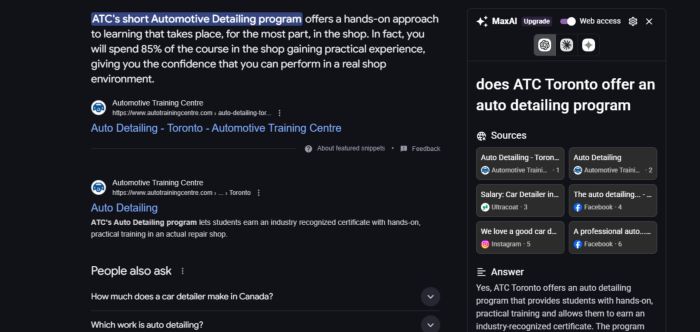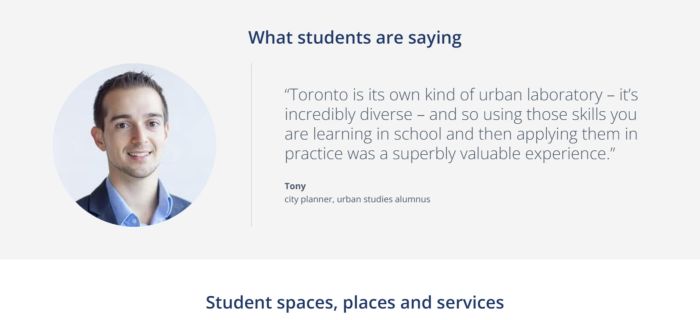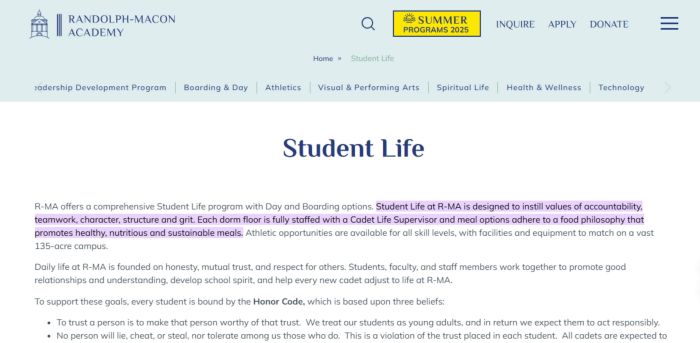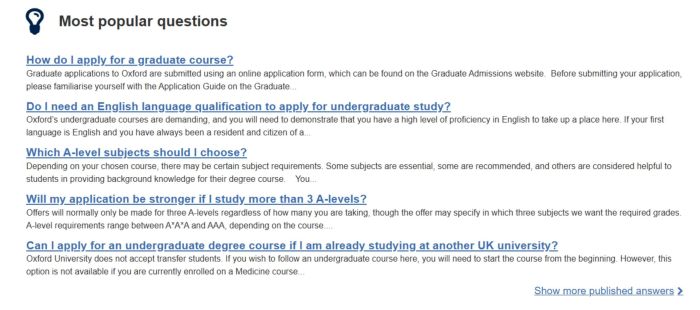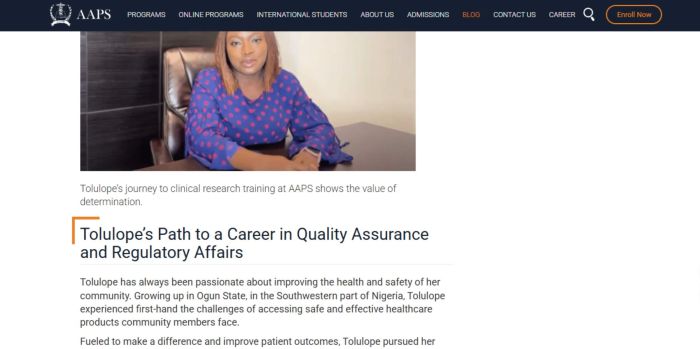Preparing for an AI-Powered Evolution in How Students Search
If you’ve ever been involved in your institution’s digital marketing efforts, you’ve undoubtedly heard of search engine optimization — otherwise known as SEO.
But after more than a decade of optimizing keywords and backlinks in content for search engines like Google and Bing, we’re now at the dawn of a new age spurred on by artificial intelligence (AI) and a new approach is required: generative engine optimization (GEO).
As prospective students turn to AI tools and large language models (LLMs) to guide their college search, traditional SEO tactics are no longer enough. Digital marketing teams must also incorporate new GEO-focused tactics into their strategies.
In an increasingly competitive and LLM-driven world, institutions must now rethink their visibility, branding, and recruitment strategies for a digital landscape that continues to evolve.
Understanding Generative Engines and Their Impact on Students’ Search Behavior
Generative engine optimization is emerging as a critical response to the way AI is reshaping how prospective students find and evaluate colleges. Unlike traditional search engines, generative engines powered by large language models deliver conversational, synthesized responses — often without requiring users to click through to a website.
This shift is impacting how institutions need to approach their digital visibility and student engagement efforts.
The Rise of LLMs
As students move away from traditional search engines toward AI search tools, LLMs and LLM-powered tools like ChatGPT, Claude, Perplexity, and Google’s Gemini and Search Generative Experience (SGE) are leading the way.
These platforms generate real-time, AI-powered answers that summarize information from across the web — often citing sources, but not always linking to them directly. Their growing popularity signals a move away from standard search engine results toward fluid, question-driven discovery.
The Impact of LLMs on Students’ Search Experiences
Prospective students are already turning to generative engines to ask nuanced questions such as, “What are the top 20 online MSW programs?” or “Which colleges have the best student support services for veterans?”
Instead of having to navigate a list of blue links, they’re receiving direct, synthesized answers to their questions. This introduces key shifts that digital marketers must consider, including:
- Fewer clicks to their institution’s website
- A higher priority for being cited in credible content
- Reduced visibility in traditional search engine results pages (SERPs)
For colleges and universities, adapting to this new behavior is essential to staying prominent in students’ minds during their decision-making process.
SEO vs. GEO in Higher Education
Search engine optimization and generative engine optimization share a common goal: to ensure content is discoverable, relevant, and credible. Both approaches rely on strategic keyword usage, high-quality content, and data-driven refinement to increase visibility.
SEO was built for traditional search engines that return ranked lists of links. GEO is designed for AI-powered engines that synthesize information and deliver complete answers.
For universities, this change requires a new, blended approach — one that takes both SEO and GEO into account when creating admissions materials, program pages, and search rankings-focused content such as blog posts.
| SEO vs. GEO: A Side-by-Side Comparison | ||
| Category | SEO (Search Engine Optimization) | GEO (Generative Engine Optimization) |
| Primary Goal | Ranks web pages in search engine results pages | Surfaces content in AI-generated, conversational responses |
| Keyword Strategy | Optimizes for exact-match and high-volume keywords | Focuses on semantic relevance and contextual cues |
| User Experience | Prioritizes site structure, navigation, and readability | Prioritizes clear, structured content that AI can easily parse |
| Content Standards | Emphasizes E-E-A-T: experience, expertise, authoritativeness, trustworthiness | Maintains E-E-A-T and adds AI-ready language and contextual richness |
| Technical Focus | Site speed, mobile responsiveness, crawlability | Site speed, structured data, natural language processing (NLP)-friendly formatting, AI interpretability |
| Authority Signals | Backlinks, domain authority, on-page trust signals | Source citations in LLM responses, content credibility |
| Measurement and Analytics | Tracks rankings, organic traffic, bounce rate, keyword performance | Tracks AI referrals, citation frequency, inclusion in LLM answers |
| Content Strategy | Page-level optimization for ranking | Multisource optimization for synthesis in AI-generated content |
| Adaptability Requirement | Evolves with search algorithm updates | Evolves with AI behavior, model updates, and platform preferences |
| User Search Experience | List of blue links with snippets | Zero-click answers, direct responses, and conversational recommendations |
How Generative Engines Pull and Rank University Content
Generative engines like ChatGPT and Google’s SGE don’t rank web pages the same way traditional search engines do. Instead, they synthesize information from multiple sources to deliver a single, cohesive answer.
To be included in these AI-generated responses, university content needs to strike a balance between academic credibility and an accessible, student-friendly structure. AI prioritizes information that is well-organized, clearly written, and backed by authoritative sources, such as:
- Research publications
- Program pages
- Institutional blogs
Institutions that prioritize clarity and credibility in their content are more likely to be cited and surfaced in generative search results.
Key GEO Strategies for Colleges and Universities
To stay visible in AI-driven searches, institutions need to adopt innovative content strategies tailored to how generative engines interpret and deliver information. Here are some core GEO tactics:
Showcase Faculty Within Content
- Highlight faculty expertise in program pages, blog posts, and FAQs.
- Link to faculty bios and published research to boost credibility.
- Feature quotes, profiles, or insights to personalize academic offerings.
Ensure AI- and LLM-Friendly Structure and Markup
- Use schema (structured data) markup to help AI understand the content’s context.
- Organize pages with clear subheadings that mirror common student questions.
- Example: “Is an Online EdD Respected?”
- Boldface key points and use callout boxes to surface important information.
- Design site architecture for easy crawling and content parsing.
Create Concise and Clear Content
- Use conversational, student-centered language.
- Write in short, scannable paragraphs with clear takeaways.
- Address common and next-level questions.
- Examples: “How long does it take to complete this degree?” and “What can I do with my degree after graduation?”
Use Content Formats That Perform Well in GEO
- Incorporate career outcome and salary tables.
- Include degree comparisons.
- Example: “MBA vs. MPA”
- Use visuals and guides that explain steps for processes such as admissions, licensure, and the student journey.
Build Brand Authority and Trust
- Invest in public relations campaigns to generate credible mentions and citations.
- Maintain consistent messaging across the web, social media, and paid media.
- Grow visibility through strategic content distribution and strong social media channels.
Measuring GEO Performance in Enrollment Marketing
As with every digital marketing initiative, it’s not enough to just roll out a GEO strategy — institutions need to measure its success. Here’s how it’s done in the GEO world:
Create LLM-Focused Dashboards via GA4 and Looker Studio
Institutions can build LLM-focused dashboards using Google Analytics 4 (GA4) and Looker Studio by creating filters for platforms like ChatGPT, Perplexity, Microsoft Copilot, Google Gemini, and Claude.
Google currently doesn’t provide direct data for AI Overview referrals, and they have been neutral in response to questions on if they will ever release AI Overview data.
While LLMs are still evolving, isolating referral traffic from these tools can provide institutions with early insight into how students are discovering their content through AI.
Use Attribution Models for AI-Influenced Student Journeys
To fully understand how GEO affects students’ enrollment behavior, marketers need to evolve their attribution models, or how enrollment conversions are attributed to different channels. AI-generated responses often play a role at the top of the enrollment funnel, influencing students before they ever land on a university’s website.
Measuring that influence through multitouch attribution and long-view funnel analysis will become increasingly important as AI tools reshape how students explore, compare, and commit to higher education programs.
Challenges and Ethical Considerations
As generative engines continue to shape how students discover universities, inherent challenges will likely arise.
AI tools can misrepresent data or present outdated information, raising concerns about their accuracy and whether they can be trusted. There’s also the risk that well-resourced, elite institutions may disproportionately dominate generative search results, reinforcing existing inequities. Lack of transparency in how algorithms surface and prioritize content makes it difficult for institutions to ensure they are receiving fair and accountable representation.
Future Trends in Higher Education GEO
When it comes to emerging digital marketing techniques like GEO, early investments can help institutions stay ahead of the curve.
Multimodal Optimization for Virtual Campus Tours and Visual Content
As generative engines evolve, optimizing for multimodal content — such as images, video, and virtual tours — will become increasingly important.
This goes beyond traditional desktop experiences. In Meta’s first quarter 2025 earnings call, Mark Zuckerberg predicted that smart glasses will eventually replace smartphones, describing them as ideal for AI and the metaverse.
With Meta already partnering with Ray-Ban on AI-integrated eyewear, higher ed marketers need to start preparing content that’s not just LLM-friendly but also immersive, interactive, and wearable-ready.
AI-Driven Personalization for Students
Rather than relying on static rankings or one-size-fits-all search experiences, AI is ushering in a wave of hyperpersonalization. Prospective students may soon interact with personalized advisors, see school rankings tailored to their goals, and receive customized digital content that aligns with their academic and career interests.
This shift will push institutions to deliver flexible, student-centered content that adapts to each individual’s intent and pathway.
Search by Outcome, Not Degree
Generative tools are beginning to trace backward from desired career outcomes by identifying what roles successful professionals hold, then linking those roles to specific programs, professors, and institutions.
For colleges and universities, this means alumni outcomes, employer partnership information, and job title visibility are essential signals. Institutions that surface these elements clearly will be better positioned to show up in outcome-based searches and AI-generated guidance.
Ready to Get Ahead of the Curve?
The use of AI and large language models in search is only going to increase, fundamentally reshaping how students discover, evaluate, and engage with higher education institutions.
Developing a strong generative engine optimization strategy is essential. GEO needs to be seamlessly integrated into your existing SEO and digital marketing efforts to ensure your institution stays visible and relevant in a rapidly shifting landscape.
With generative engines evolving at an unprecedented pace, now is the time to prepare for how you’ll reach the next generation of students.
Want to talk through how GEO fits into your broader enrollment strategy? Contact Archer Education to start the conversation.
Sources
Search Engine Journal, “How LLMs Interpret Content: How to Structure Information for AI Search”
Search Engine Land, “What Is Generative Engine Optimization (GEO)?”
The Verge, “Why Mark Zuckerberg Thinks AR Glasses Will Replace Your Phone”
Yahoo Tech, “What Mark Zuckerberg Said About Smartglasses This Week Reveals His Opinion on AI”





